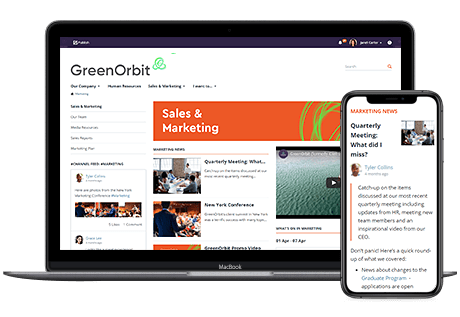
While choosing the last round of candidates for a management position, my CEO and CTO unanimously chanted
“Trust your gut!”
You’ve probably heard this “trust your gut” or “go with your instincts” mantra from many people you trust or respect; however, how well should we really be trusting our gut instincts?
If we can’t trust our own gut, can we at least rely on those who are most experienced to make good decisions?
Nobel Prize winning psychologist and author Daniel Kahneman says "not so fast" as this mantra isn’t always true:
“...intuition is thinking that you know without knowing why you do.”
It gives us confidence in our decision making but the problem is that confidence does not equate to accuracy.
If left to its own devices, the human brain tends to make systematic errors that lead to “biased” decisions.
The word “bias” is often linked to racial prejudices and propagandas.
There is another whole category of bias that many people are unaware of - “cognitive bias”. This bias is the culprit behind the numerous faulty ways we perceive information and can lead us into making irrational decisions.
They are pitfalls of our self-delusion where we judge situations through the filters of our personal experience and preferences, while being completely ignorant of the fact that we are being affected.
Cognitive biases tend to be hardwired and exist as our mental shortcuts.
By going with our intuition, we don’t stop to consider all the details so we save time and energy and therefore are more efficient at decision making, but are we effective?
Kahneman (whom I am dubbing here as Dr. Dubious) believes these trade-offs lead to mental errors.
Here are 6 cognitive biases that may be affecting your decision-making.
Confirmation bias puts our pre-existing beliefs first - whilst ignoring everything that clashes them.
Give this riddle a go:
A father and son are in a car crash and are rushed to the hospital. The father dies. The boy is taken to the operating room and the surgeon says, “I can’t operate on this boy, because he’s my son.”
Can you provide a reasonable answer to this scenario?
If you were struggling, confirmation bias has clouded your reasoning and you were searching for solutions to a problem that you have already deemed wrong.
If you guessed that the surgeon could be the boy’s mother, congratulations, you passed the gender bias test!
Have you also considered that the boy could have two gay dads? If you did, fabulous, you have also passed the LGBTQIA test.
Anchoring (or focalism) bias is a cognitive bias where you make decisions based on an initial offered piece of information (i.e. the “anchor”).
Let’s say you work for a large global corporation and you're given a budget of about $100k for a digital workplace solution.
You come across three intranet products:
You start by researching the first two products - because the cheaper product is way under budget and may not meet the needs of your large enterprise.
Arrr!
Before your search even begins, $100k has become your anchor and focal point - clouding the assessment of which product is right for your organization.
We are easily swayed by irrelevant information presented to us prior to making a decision.
Retrievability bias (or the availability heuristic) refers to our tendency to make decisions based on memories that we can recall.
When staff at a company with a high retention rate get surveyed about their job security, they would most likely scan their memory for the people who have left the company recently.
If they only remember those that got dismissed suddenly, they will likely feel that their job is insecure.
If they could access the details of their company’s yearly retention rate or if they knew that most colleagues have been working at the same company for numerous years, their answer will likely change.
The retrievability bias leads to bad decision-making because misleading information tends to be easier to access.
In psychology, regression fallacy (or regression to the mean) describes how we tend to make biased predictions about the future by forgetting to regress the situation.
For example, when managers conduct performance reviews, they often believe that criticism is better than praise when they want to see improvements.
The assumption here is that if one gets praised, they may be likely to perform worse next time, whereas criticism leads to better future performance.
Instead of a praise or criticism, let’s say the manager asked the staff to change their work process.
In this alternative scenario, the manager starts to see improvement in work performance. It is now very tempting to assume that it was that work process that resulted in such improvement.
Hindsight bias (or the ha-I-knew-it-all-along phenomenon) happens when we perceive differently according to past events.
It rewards risk seekers who take gambles that work - simply because they got lucky.
Conversely, the doubters in hindsight get seen as timid. Without factual data, we may be promoting or crowning a reckless mad-king… or queen to the throne.
Hyperbolic discounting (or what I like to call your-future-self bias) is about devaluing choices intertemporally.
These choices are influenced by the relative value you assign to payoffs at different points in time.
Hal Hershfield, an assistant professor at New York University’s Stern School of Business explained through his research that we think of our future selves like we think of others: in the third person.
He and his colleagues took subjects into a room with a virtual reality mirror that allowed some of the subjects to see their digitally aged image of themselves.
When the subjects exited the room, those who were “aged” said they would contribute twice as more money into their retirement fund than the “unaged” subjects.
When we are faced with a time-based decision, for example deciding when is the best time to start digitalizing our paper forms and assets, we might choose to procrastinate and let our future self to deal with that decision - we often forget that in the future it only takes one more extra team member to double the entire paper workload.
We’d like to think that we can make unbiased decisions but we’re only human at the end of the day.
Now that technology can provide us with endless data, it’s time to harness big data analytics to draw insights and make data-driven decisions - particularly in the HR department.
Think about it, a people-focused department with all those unused people analytics: an intranet analytics data-driven approach is the solution.
If you set up an eLearning site, wouldn’t you want insights into how many unique users have visited each topic, how long they have stayed on the pages, how many days have gone past since their last visit, and how many pages they have visited each time?
Once you get your Information Architecture right, you can set up goals to measure how many people have successfully navigated to your new pages.
What are the keywords people kept searching for?
Which activity feeds are they engaging with the most?
These answers are opportunities to strengthen your company work culture and to make less biased people-focused decisions - because you no longer have to rely on your instincts to spot disengaged employees.
